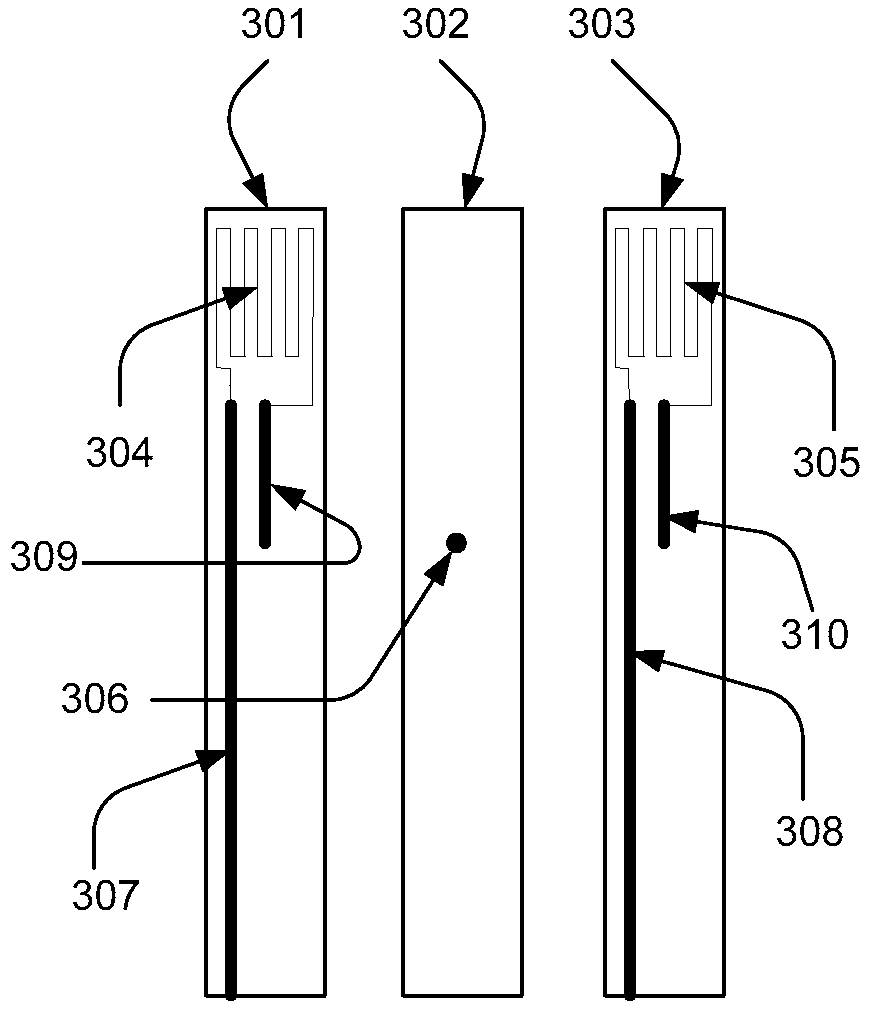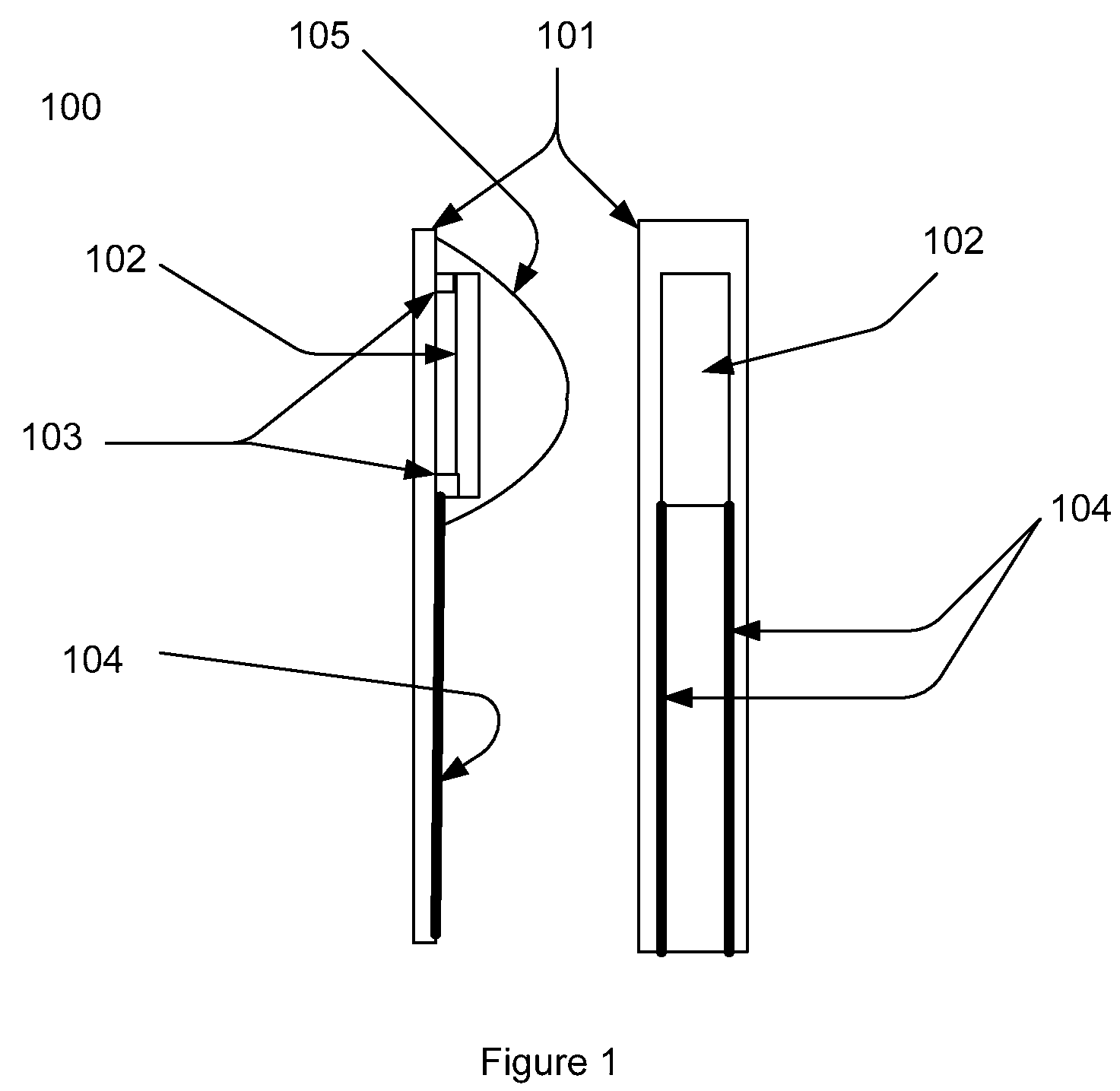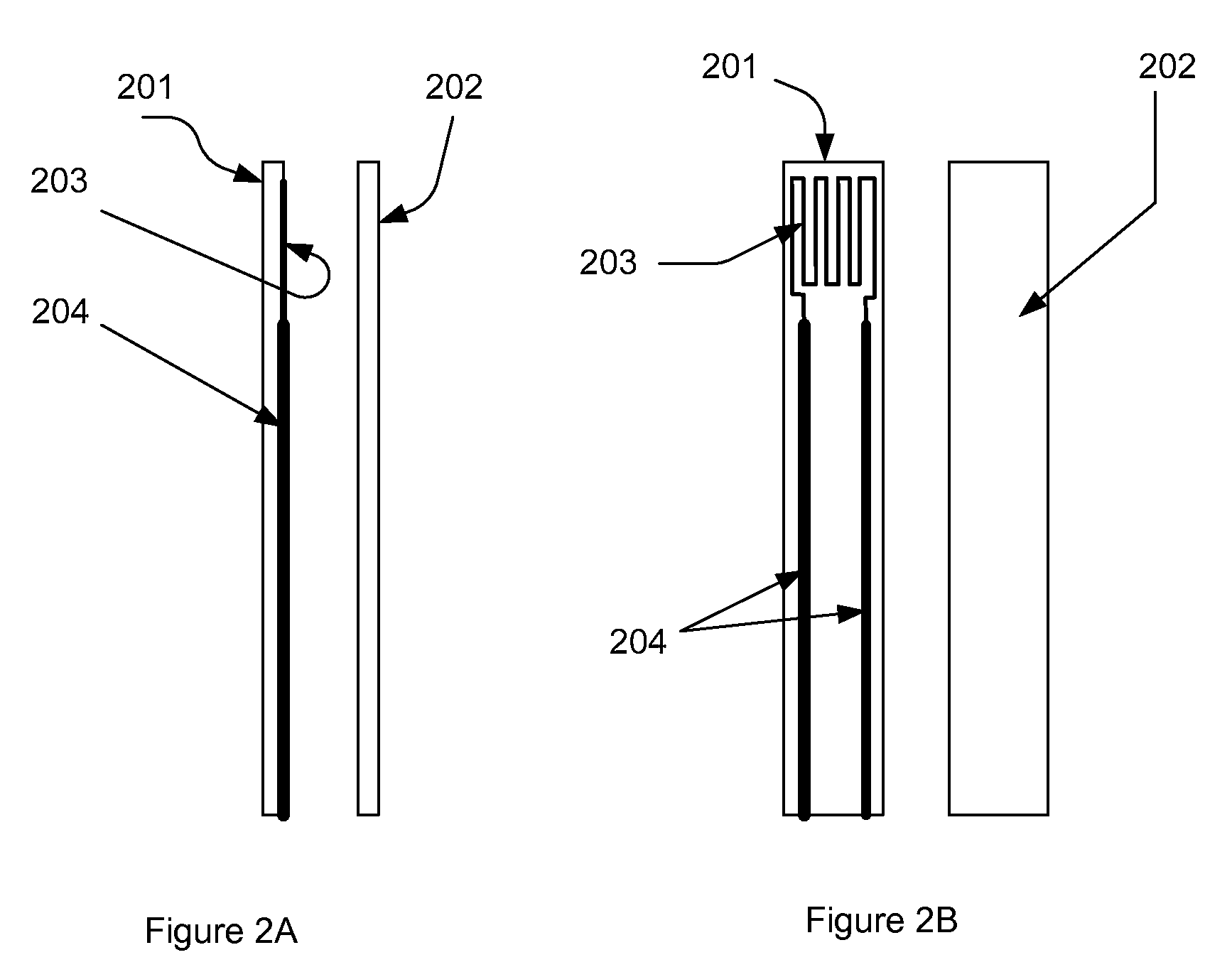Laminated temperature sensor
a technology of temperature sensor and laminated paper, which is applied in the field of temperature sensor, can solve the problems of low cost of manufacturing such sensors for the automotive market, and achieve the effect of reducing unwanted and unpredictable strain on the substra
- Summary
- Abstract
- Description
- Claims
- Application Information
AI Technical Summary
Benefits of technology
Problems solved by technology
Method used
Image
Examples
first embodiment
[0031]Turning now to FIG. 3, in the present invention a temperature sensor 300 is formed from three initially unfired (or green) ceramic substrates 301, 302, 303.
[0032]The first substrate 301 has a temperature sensitive means 304 in the form of a resistor printed on a first surface. Additionally first and second conducting elements 307 and 309 are also printed thereon. A first end of each of conducting element 307 and 309 is arranged to connect electrically with two points on temperature sensitive means 304. A second end of first conducting element 307 is extended to a position on substrate 301 to enable subsequent external electrical connection to be made thereto. A second end of conducting element 309 is extended to a given position on the substrate 301, typically substantially at the middle point of the substrate 301.
[0033]The third substrate 303 has a temperature sensitive means 305 in the form of a resistor printed on a first surface. Additionally first and second conducting el...
second embodiment
[0037]Turning now to FIG. 4, in the present invention a temperature sensor 400 is formed from three initially unfired (or green) ceramic substrates 401, 402, 403. As above: the first substrate 401 is provided with a temperature sensitive means 404 in the form of a resistor printed on a first surface and first and second conducting elements 407 and 409 printed thereon and connected thereto; the third substrate 403 is provided with a temperature sensitive means 405 in the form of a resistor printed on a first surface and first and second conducting elements 408 and 410 printed thereon and connected thereto; and the second substrate 402 is provided with a conducting via 406 in the form of a hole extending through the substrate 402 and filled with conductive material, the via 306 being aligned with the ends of conducting elements 409 and 410. Similarly, the sensor 400 is constructed by aligning, pressing and firing the substrates 401, 402, 403.
[0038]The second embodiment 400 differs in ...
PUM
| Property | Measurement | Unit |
|---|---|---|
| temperature | aaaaa | aaaaa |
| temperature | aaaaa | aaaaa |
| temperature sensitive | aaaaa | aaaaa |
Abstract
Description
Claims
Application Information
 Login to View More
Login to View More - R&D
- Intellectual Property
- Life Sciences
- Materials
- Tech Scout
- Unparalleled Data Quality
- Higher Quality Content
- 60% Fewer Hallucinations
Browse by: Latest US Patents, China's latest patents, Technical Efficacy Thesaurus, Application Domain, Technology Topic, Popular Technical Reports.
© 2025 PatSnap. All rights reserved.Legal|Privacy policy|Modern Slavery Act Transparency Statement|Sitemap|About US| Contact US: help@patsnap.com



